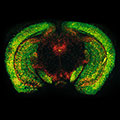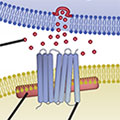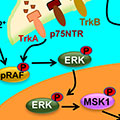Featured Paper of the Month – February 2019
Published in Neuropsychopharmacology by Gao, Jun-Tao; Jordan, Chloe J; Bi, Guo-Hua; He, Yi; Yang, Hong-Ju; Gardner, Eliot L; Xi, Zheng-Xiong
Despite extensive research in the past decades, little is known about the etiology of opioid addiction. In this study, Xi and colleagues found that genetic deletion of mGluR2, a glutamate receptor subtype, in rats caused an increase in brain dopamine responses to heroin and in opioid reward, facilitating the development of opioid use and abuse. This finding suggests that low-mGluR2 expression in the brain may be a risk factor for the development of opioid abuse and addiction…










